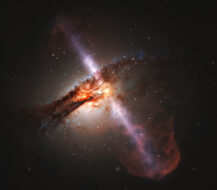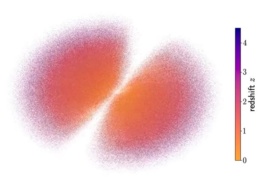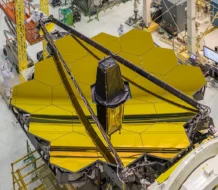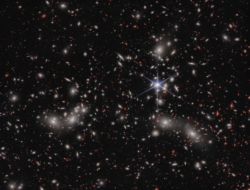Jupiter’s moon Europa creates enough oxygen every day to keep a million people breathing—but that’s less than researchers used to think.
As the icy moon orbits Jupiter, charged particles from the gas giant’s radiation belt bombard the surface and split water molecules, creating as much as 26 lbs of oxygen every second—some of which may find its way beneath the frozen crust and into the mysterious ocean below. NASA’s Juno spacecraft recently captured this phenomenon in remarkable detail.
The study’s findings were published on Monday in the journal Nature Astronomy.
“Juno brought a new capability to directly measure the composition of charged particles shed from Europa’s atmosphere,” JADE scientist Jamey Szalay said in a JPL release. “But what we didn’t realize is that Juno’s observations would give us such a tight constraint on the amount of oxygen produced in Europa’s icy surface.”
The hunt for life: Europa is the fourth-largest moon of Jupiter, and a promising target for researchers searching for signs of life elsewhere in the solar system. Few spacecraft have ever made it all the way to study the Jovian system in detail: there’s been Galileo, a New Horizons flyby, and now Juno.
Juno used its Jovian Auroral Distributions Experiment (JADE) instrument, one of the 11 instruments on board, to collect data for this study. By measuring the amount of hydrogen being emitted into space due to radiation bombardment, the research team back on Earth could figure out with a high level of accuracy just how much oxygen was also being produced on Europa.
Following up: Juno is currently on its way to another member of the Jovian system—the volcanic moon Io.
Meanwhile, new missions are headed to Europa in the near future to follow up on the observations of Juno and the other science probes and to search in more detail for signs of life. ESA launched its JUICE probe last year, which is currently on a trajectory to study the icy moons of Jupiter. NASA is also gearing up to launch its Europa Clipper mission, which is expected to arrive at the system in 2030.




